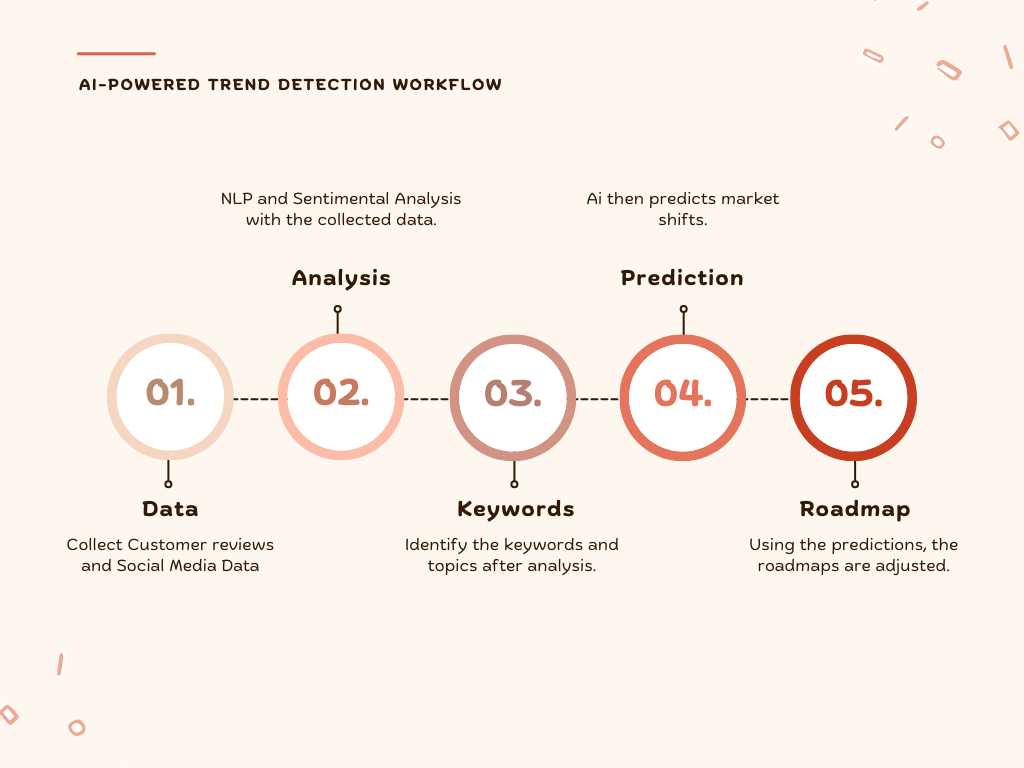

AI is redefining digital product management; from customer insight to feature rollout. This article, by Product Development Specialist Sujathullah Panchi, explores how leading companies are using AI to accelerate decision-making, boost efficiency and drive innovation and what the future of product management looks like in an AI-first world.
Introduction
When Spotify’s AI-driven Discover Weekly feature launched, it transformed how 456 million users discover music, generating 16 billion discoveries per month. This isn’t an isolated success story; it’s the new reality of AI-powered product management.
By 2025, AI has become a true co-pilot in digital product management, supercharging how teams make decisions, prioritize features and ship products.
It’s not replacing product managers, but helping them move faster with smarter insights. AI agents now automate tasks, surface user trends and even run experiments, letting teams focus on strategy and creativity. Companies like Atlassian and JPMorgan are already seeing 20%+ gains in productivity thanks to these tools.
Let’s explore how AI is reshaping digital product management and what the future holds.
Evolution
Digital product management has always been a balance of art and science where the art involves understanding customer needs, market trends and crafting a well-defined product vision while the science focuses on data analysis, metrics and optimizing workflows. However, with the rise in data from customer interactions, product usage and competitive landscapes, the science aspect has grown exponentially.
Today, as products generate over 2.5 quintillion bytes of data daily, AI has revolutionized the ‘science’ aspect. Modern product managers don’t just analyse data, they harness AI to predict trends, automate decisions and personalize experiences at scale.
AI in Action: Transforming Core Product Management Areas
AI is reshaping digital product management by turning data into intelligent decisions, reducing guesswork and empowering teams to make faster, more precise choices. From understanding customers on a deeper level to prioritizing features that bring the highest ROI, AI is transforming how product managers plan, execute and optimize products. Below are some of the areas where AI is shaping Product Management
Market Research and Customer Insights
Understanding the market and customers is fundamental to product success. AI enables product teams to analyze massive datasets instantly, unlocking insights that would take weeks or months to extract manually.
- Behavior analysis: How Users Interact with Product
AI helps product teams decode user behavior, such as how people navigate, engage and drop off, which offers a clear roadmap for improving usability and engagement.

- AI tracks and analyzes user movements, such as navigation flows, clicks, session durations and feature adoption rates.
- It detects patterns of engagement and friction, pinpointing areas where users drop off, hesitate or repeatedly interact.
Example: through AI tracking, Netflix realizes that users abandon searches mid-way, leading to frustration. The team implemented an AI-powered autocomplete search feature, resulting in a 30% reduction in drop-offs and improved content discovery.
- Trend Detection: Spotting Opportunities Before Competitors
Staying ahead of customer expectations allows businesses to build the right features before they become mainstream.

- AI-powered natural language processing (NLP) scans customer reviews, social media and forums to identify emerging trends before they gain traction.
- Detects shifts in user preferences, allowing businesses to pivot before competitors.
Example: Peloton, a fitness app, noticed a surge in conversations about mindfulness workouts. AI highlights this growing interest, prompting the company to launch a guided meditation and recovery feature, increasing engagement by 40%.
- Customer Segmentation: Tailoring Experiences to Different Users
A one-size-fits-all approach no longer works. AI segments users dynamically, allowing teams to create hyper-personalized experiences.

- AI clusters users into groups based on behavior, purchasing patterns and preferences.
- Segments continuously evolve in real time, ensuring that businesses deliver relevant content, promotions and experiences.
Example: A subscription-based e-commerce platform segments users into “bargain hunters,” “brand loyalists,” and “impulse buyers.” AI then automates marketing campaigns, offering discounts for bargain hunters, exclusive perks for brand loyalists, and limited-time offers for impulse buyers leading to a 25% increase in conversions.
Feature Prioritization and Roadmap Planning
Beyond understanding users, AI is also transforming how teams decide what to build next.
Choosing which features to build is one of the most challenging tasks for product managers. AI simplifies this by analysing data to predict feature impact and align priorities with business goals.
- Impact Simulation: AI models forecast how new features will affect user behaviour, retention rates and revenue.
- Dynamic Roadmaps: AI-powered platforms like Productboard adjust roadmaps in real time based on user feedback and competitive market shifts.
Example: Amazon identified that cart abandonment rates were rising due to long checkout processes. AI-driven simulations showed that adding a “1-Click Checkout” feature would significantly reduce friction and increase completed purchases. The feature was rolled out and resulted in a 20% boost in conversion rates.
The Future of AI in Digital Product Management
As AI capabilities accelerate, its role in digital product management is shifting from task automation to strategic orchestration. It is no longer confined to assisting with documentation or analytics AI is now embedded into product workflows, serving as both advisor and executor.
- Generative AI will evolve beyond content creation to become a creative ideator; producing user stories, experience flows and design mocks tailored to strategic goals and historical user data.
- Agentic AI will take on more autonomy, not just recommending product directions but actively testing assumptions, running experiments and adapting features based on continuous feedback often before human teams even detect a shift in user needs.
- AI-Powered Collaboration Environments will allow distributed teams to simulate entire product scenarios aligning engineering, design and marketing functions in a shared space where decisions are modeled and optimized in real time.
By 2030, AI-powered product management tools will increase revenue growth for tech companies by up to 50% (BCG, 2023).
Conclusion
AI is revolutionizing digital product management, offering smarter decision-making, hyper-personalization and real-time adaptability. Companies that integrate AI into their product strategies will outpace competitors, deliver superior user experiences, and build data-driven products that scale.
As AI continues to evolve, product leaders must rethink their processes, tools and teams. Are you ready to lead the AI-driven product revolution.












